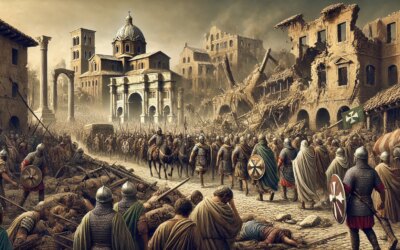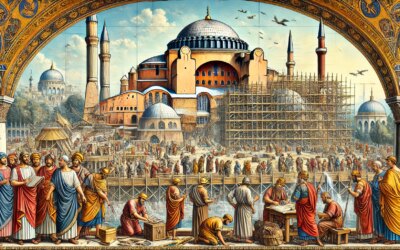Rome in the Crossfire of Empire
By the 6th century CE, Rome was no longer the capital of a vast empire but a contested battleground between the Byzantine Empire and the Ostrogoths. Emperor Justinian I sought to reclaim Italy from the Germanic rulers who had controlled it since the fall of the Western Roman Empire in 476 CE. This ambition led to the Gothic Wars (535–554 CE), a brutal conflict that saw Rome besieged multiple times. One of the most dramatic moments came in 537 CE when the great Byzantine general Belisarius defended the city against overwhelming Ostrogothic forces.
Belisarius and the Defense of Rome
When Belisarius arrived in Rome in 536 CE, he took control of a city ill-prepared for war. The population had dwindled, and its defenses were in poor condition. Nevertheless, Belisarius, a master strategist, fortified the Aurelian Walls and positioned his troops to withstand an attack. The following year, King Vitiges of the Ostrogoths marched on Rome with an army of over 50,000 warriors, determined to recapture the city.
The Siege Begins
In March 537 CE, the Ostrogoths laid siege to Rome, cutting off its aqueducts in an attempt to deprive the defenders of water. They launched relentless assaults against the city’s gates, using siege towers and battering rams. Despite being heavily outnumbered, Belisarius and his 5,000 men repelled every attack through superior tactics, strategic use of archers, and well-timed counterattacks.
Rome Under Fire
The siege lasted for nearly a year, plunging the city into starvation and disease. Roman citizens, caught in the crossfire, suffered immensely. Belisarius used deception and guerrilla tactics to demoralize the Ostrogoths, launching surprise raids and even sending disguised soldiers to spread fear among the enemy ranks.
The Ostrogoths Retreat
By March 538 CE, after repeated failures to breach the walls and suffering heavy casualties, Vitiges withdrew his forces. The siege had failed, and Rome remained under Byzantine control. However, the war was far from over, and Italy would continue to be ravaged by conflict for years to come.
A Legacy of Struggle
The siege of Rome was a turning point in the Gothic Wars, demonstrating Belisarius’ military brilliance and the resilience of the city. However, the prolonged conflict devastated Italy, weakening its economy and infrastructure. Though Justinian’s dream of a restored Roman Empire briefly materialized, the wars left the region vulnerable, paving the way for new invaders in the centuries to come.






